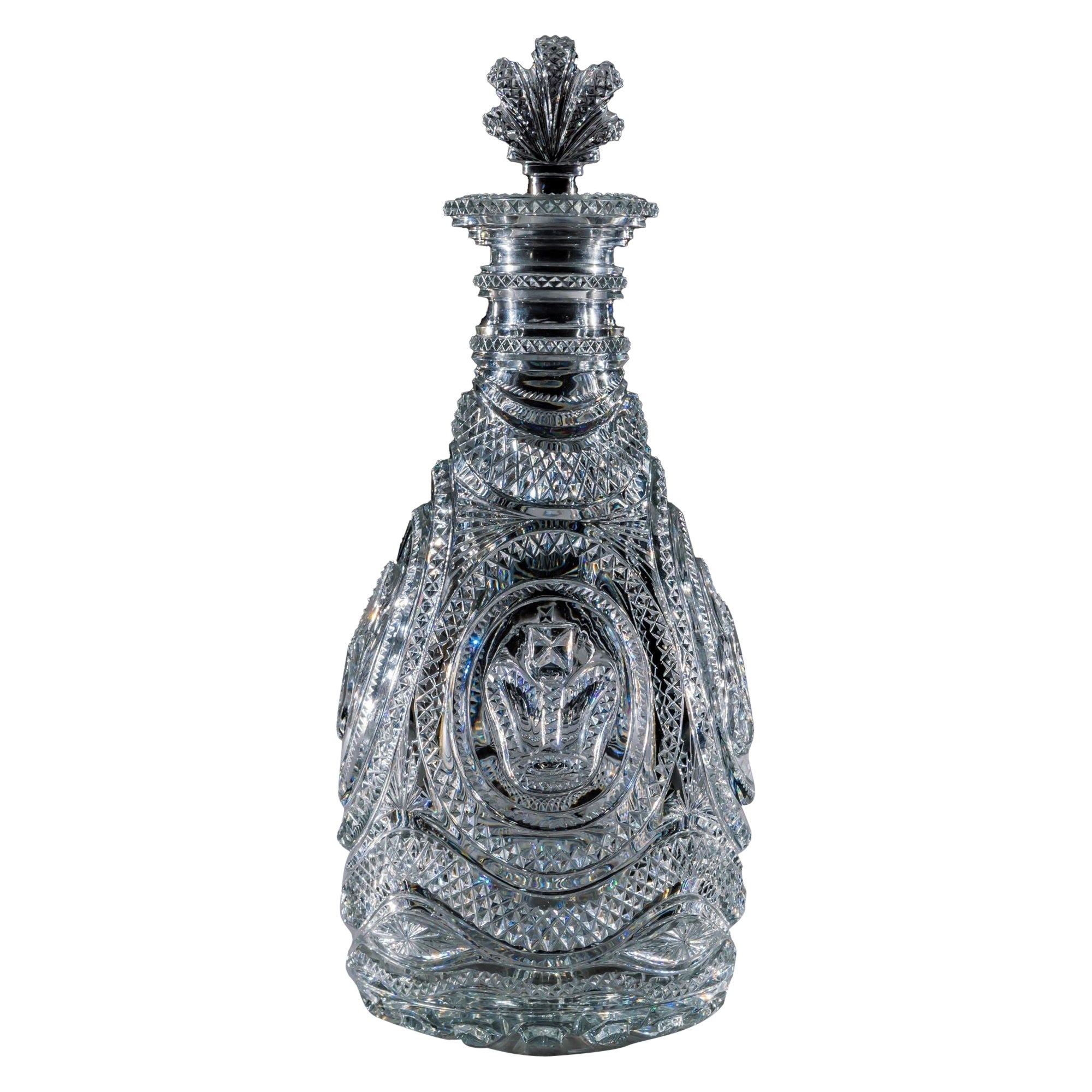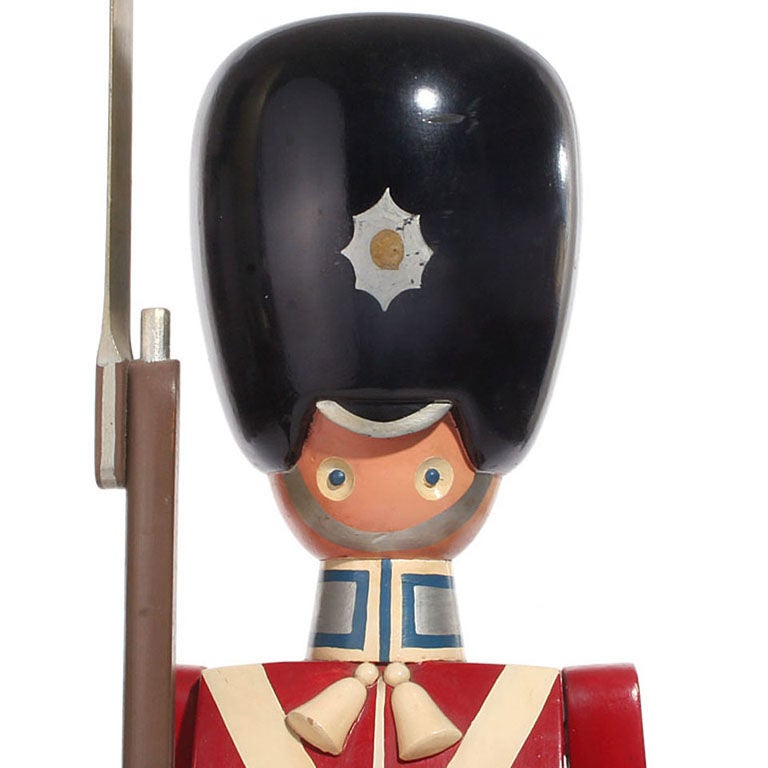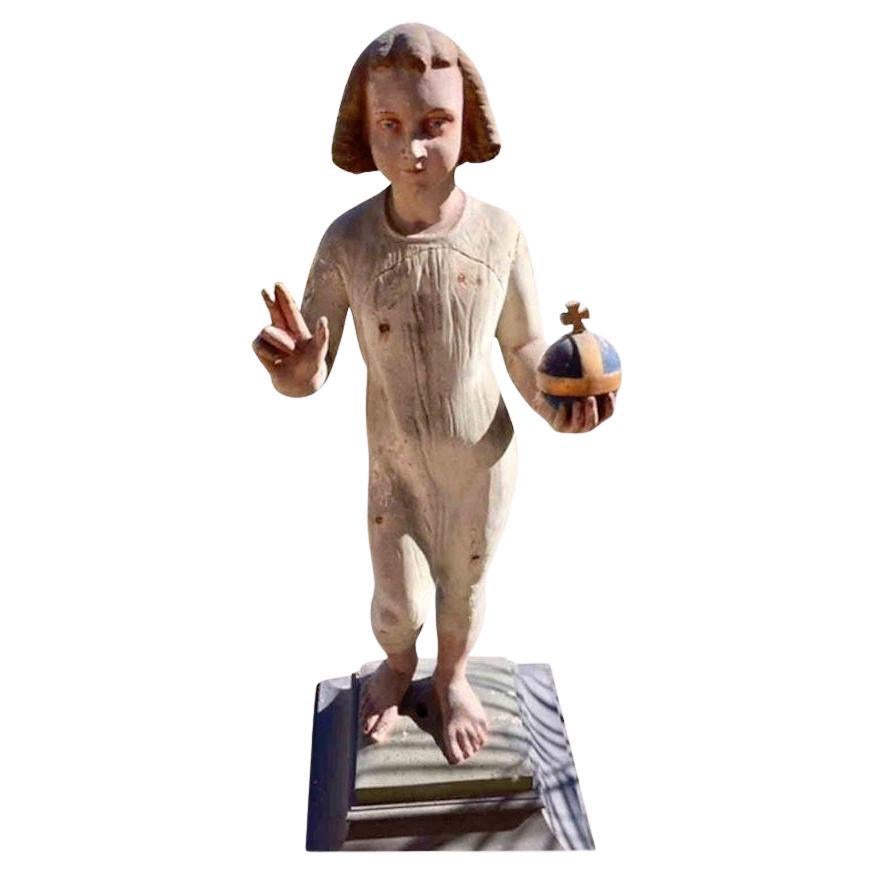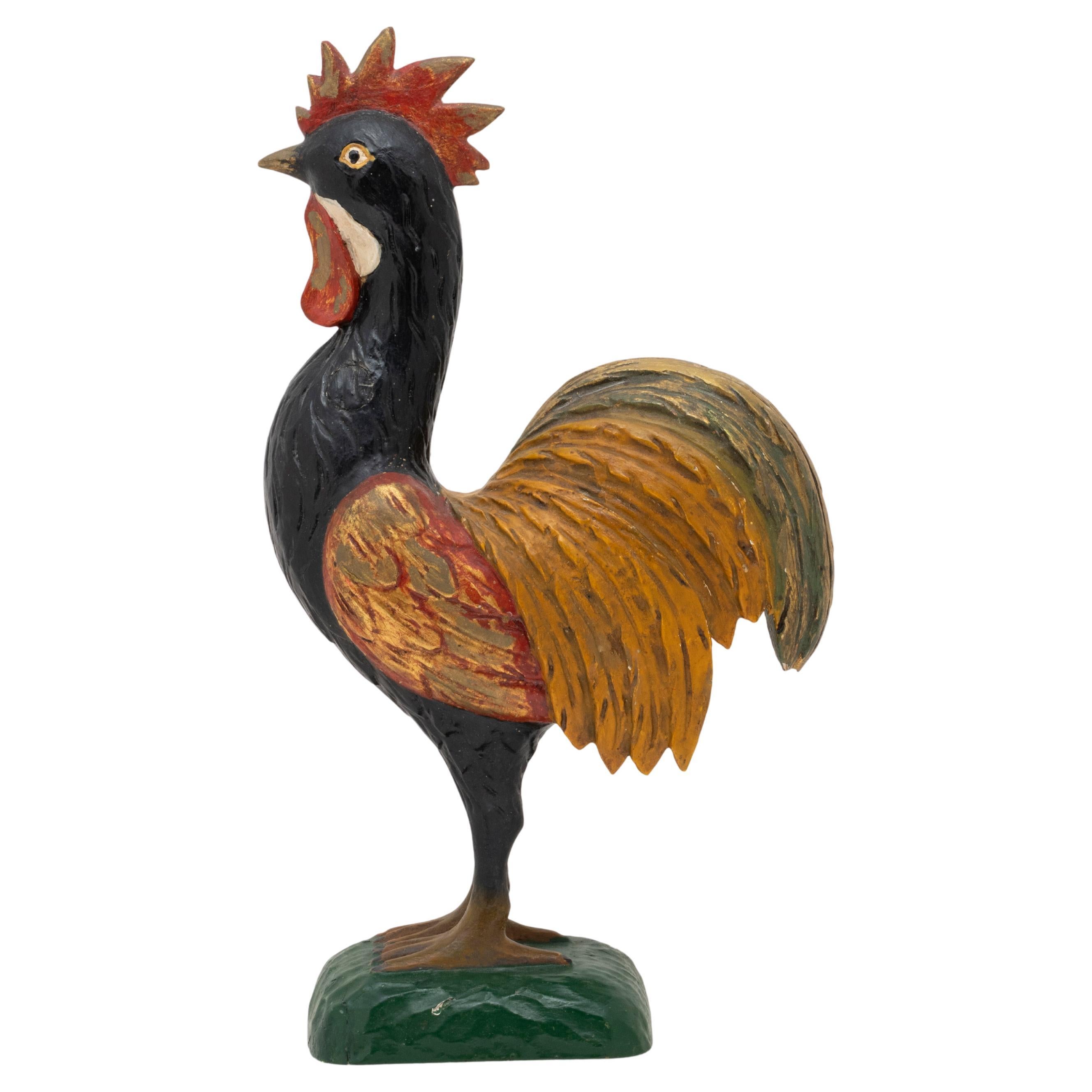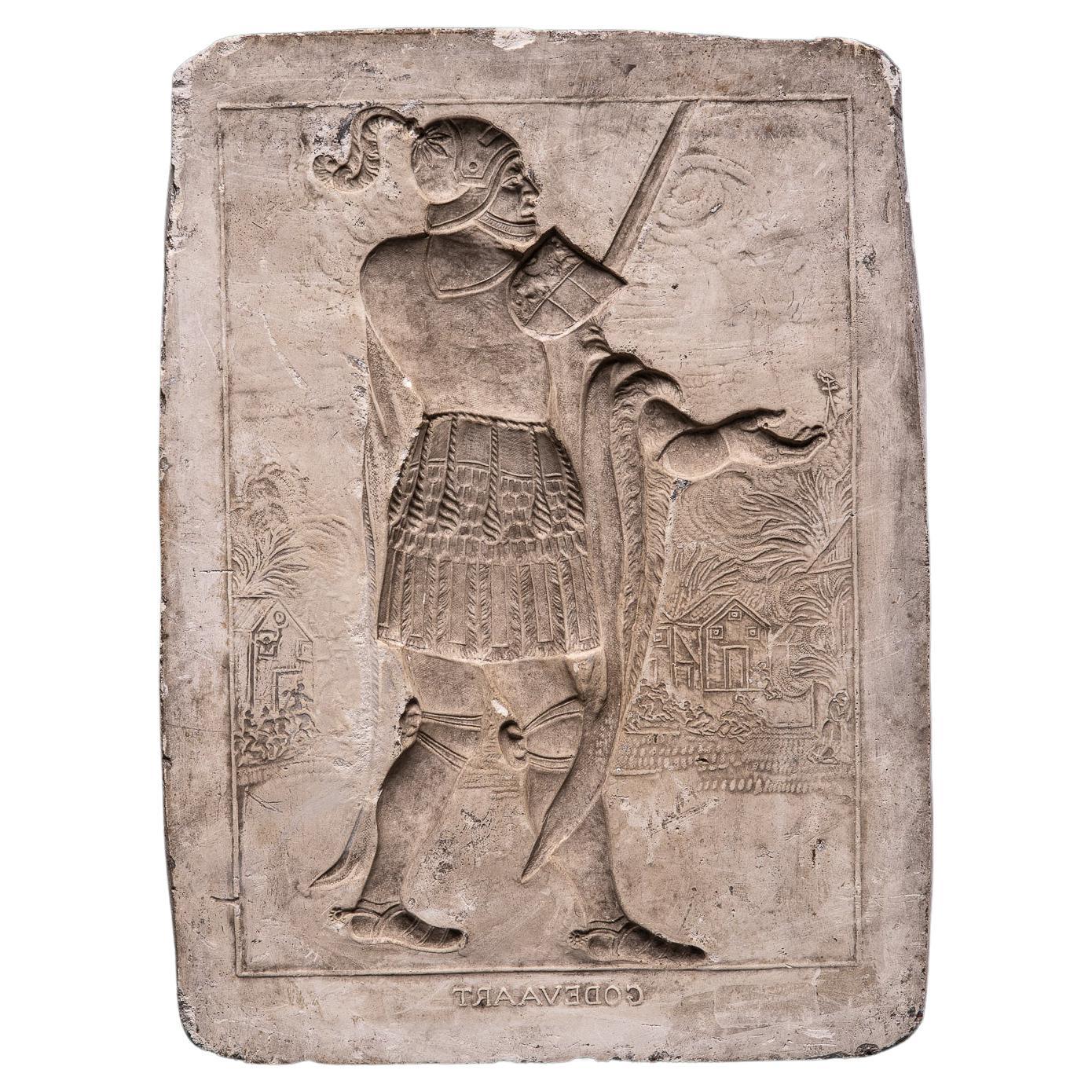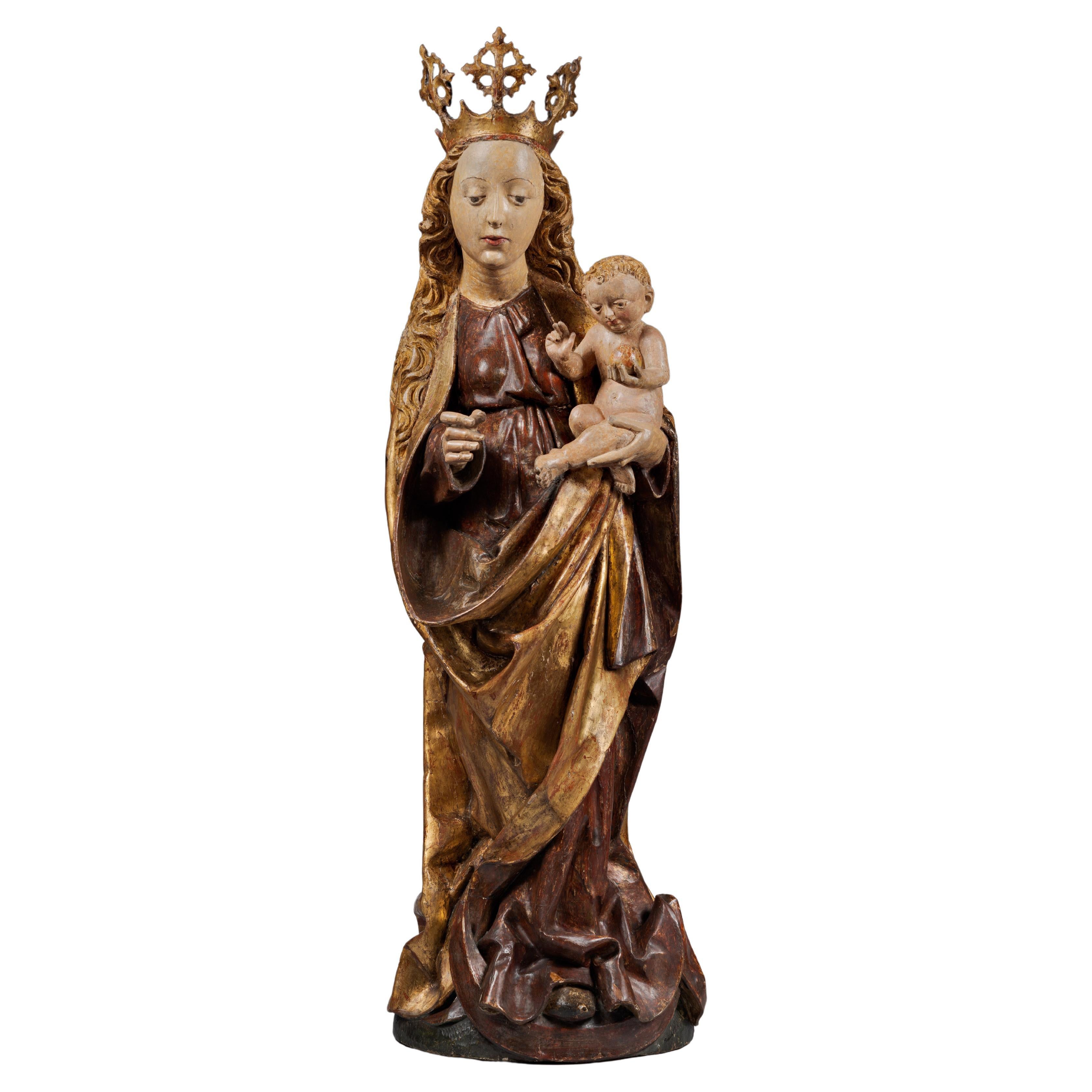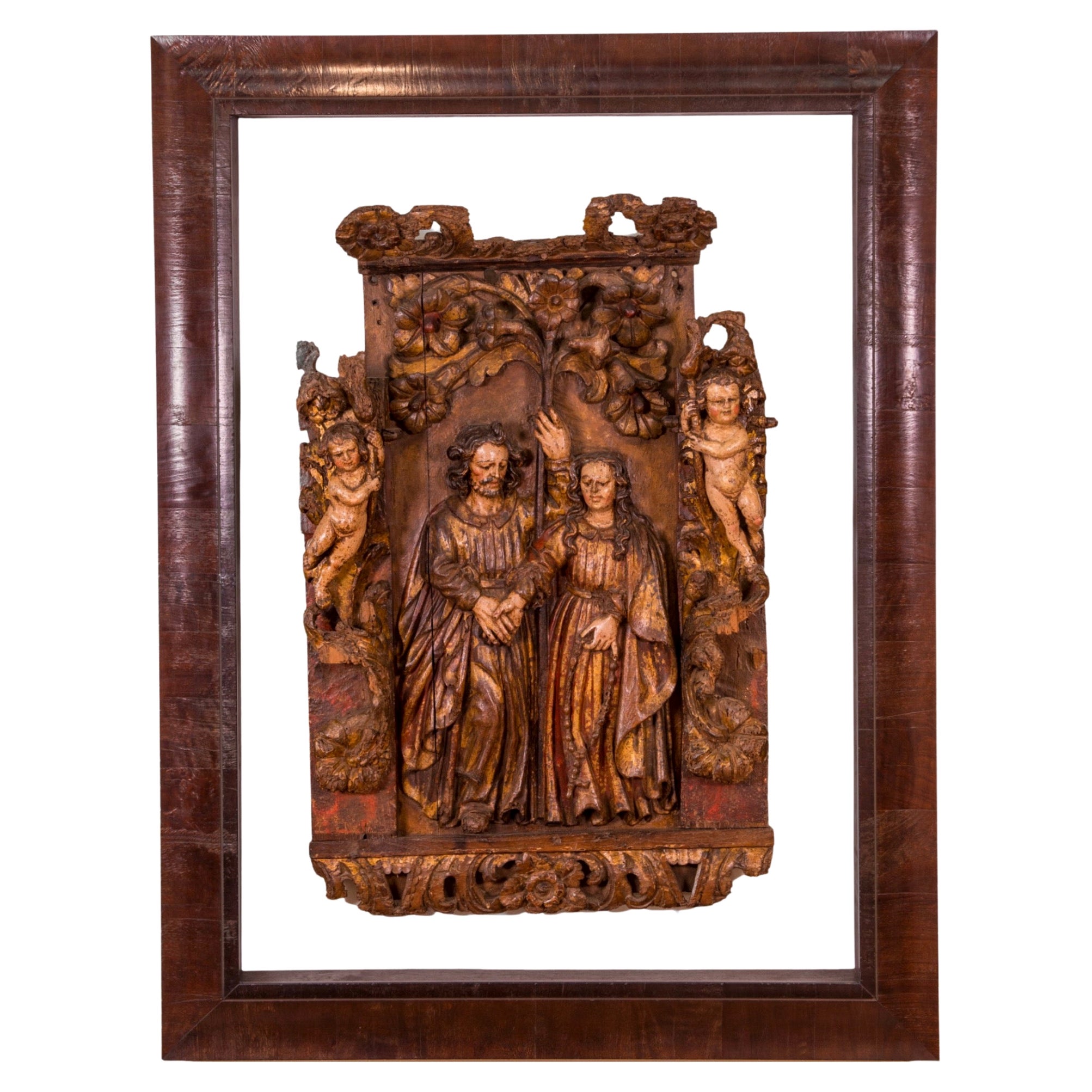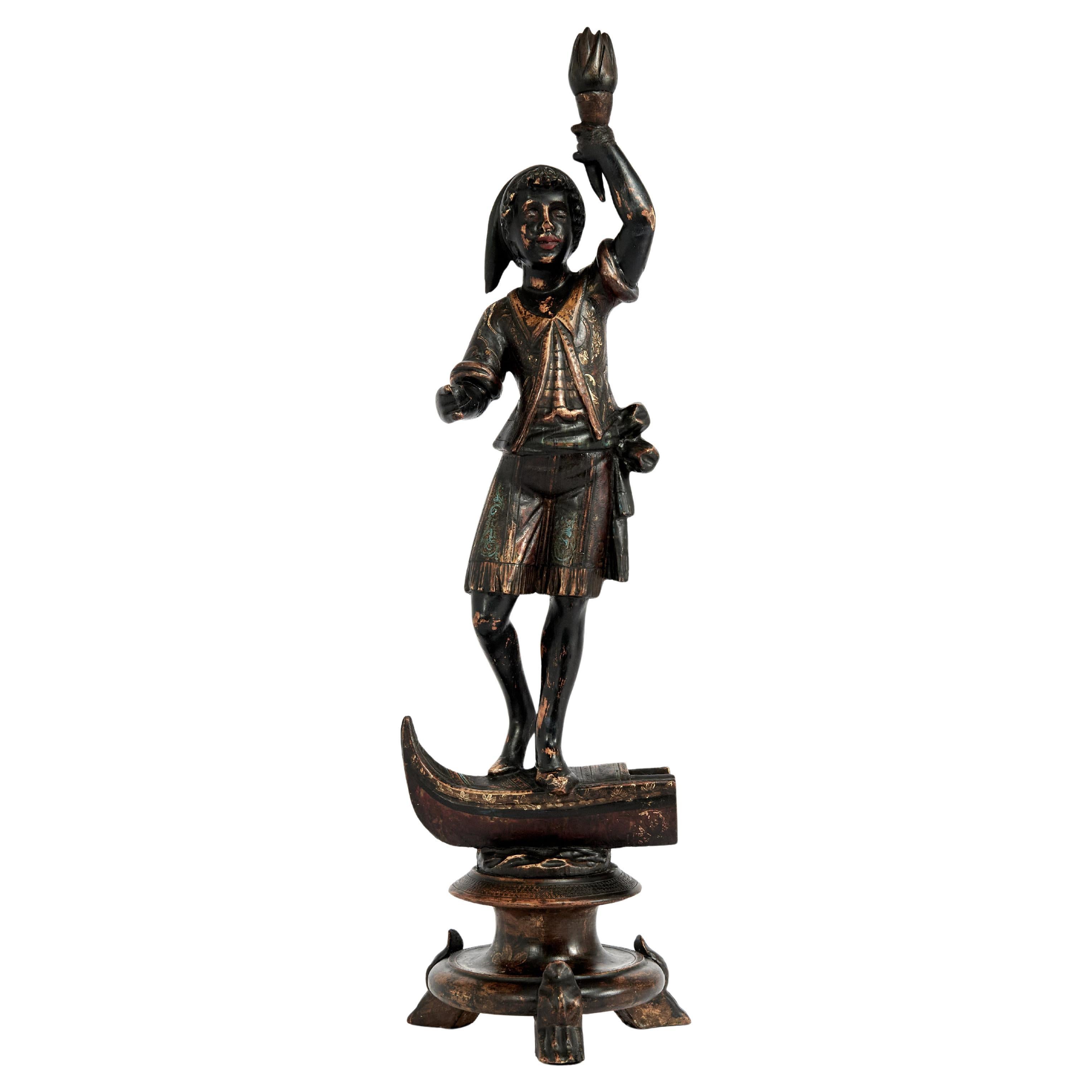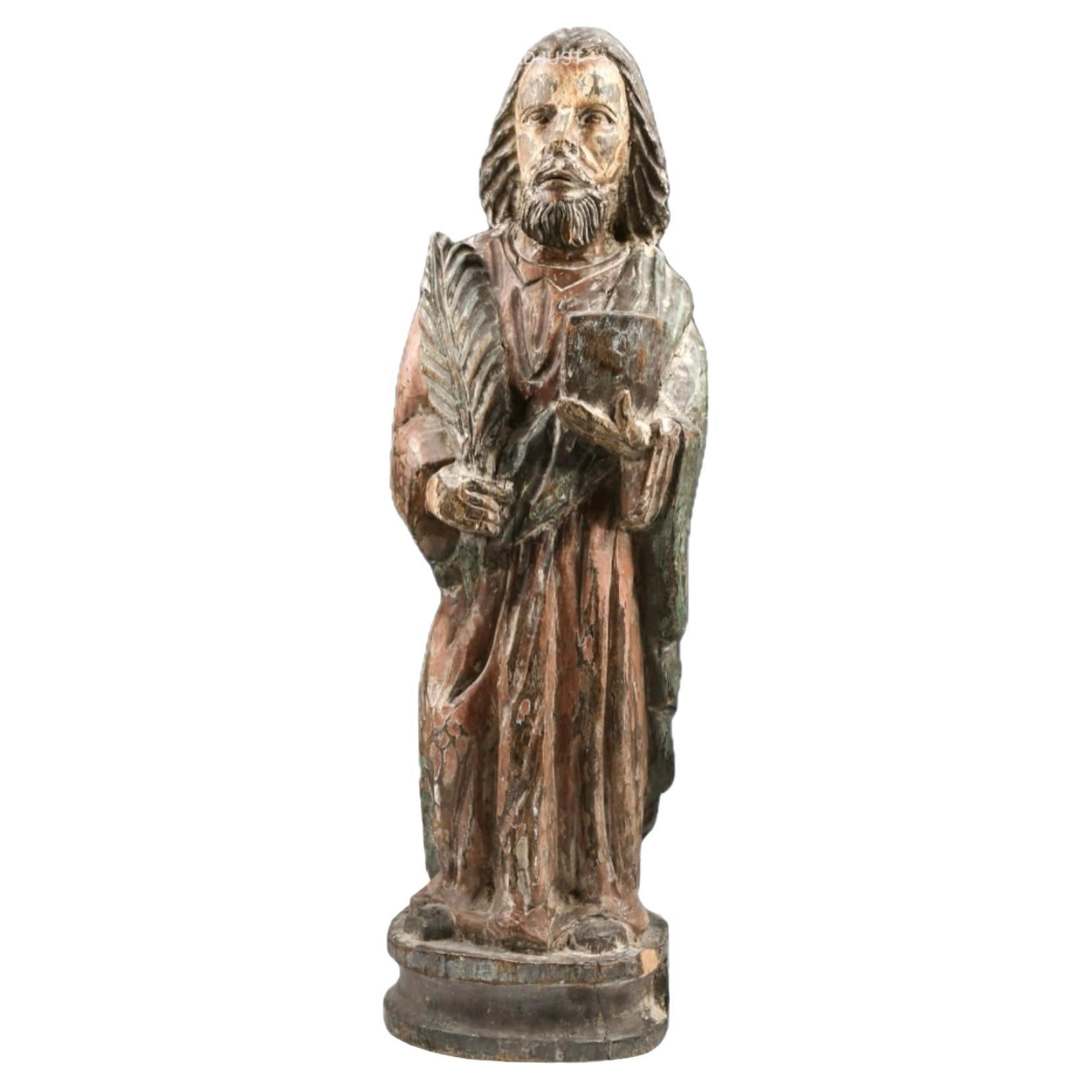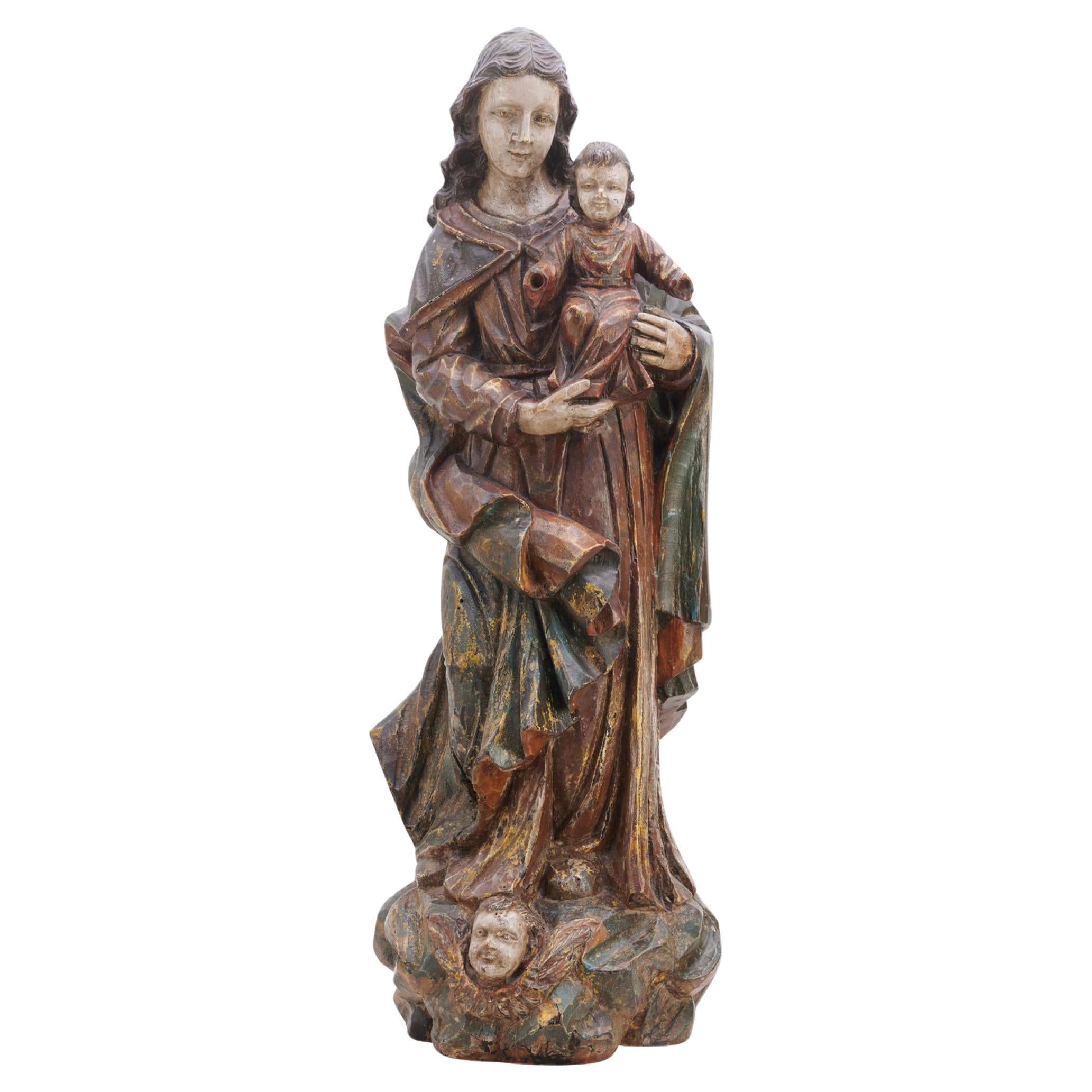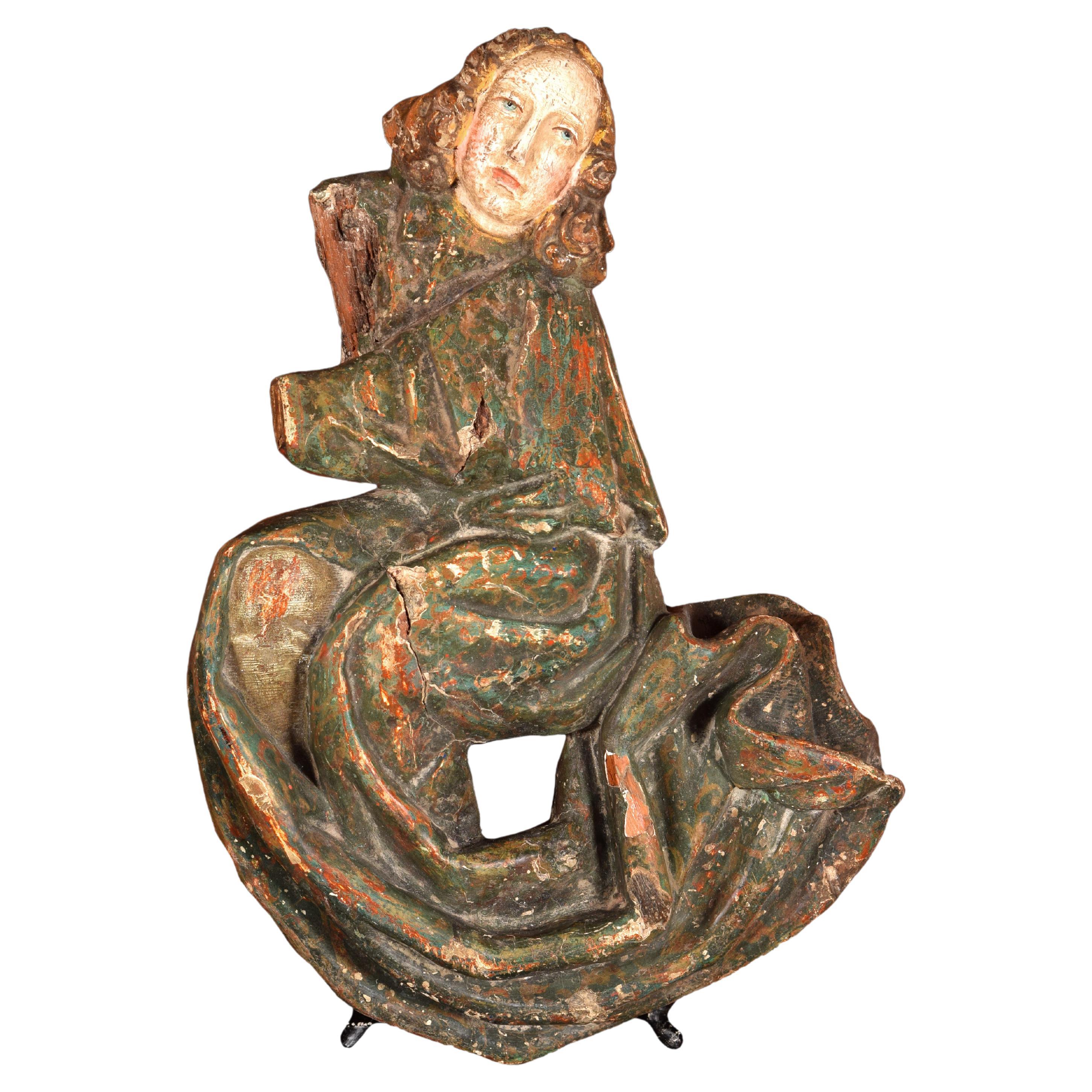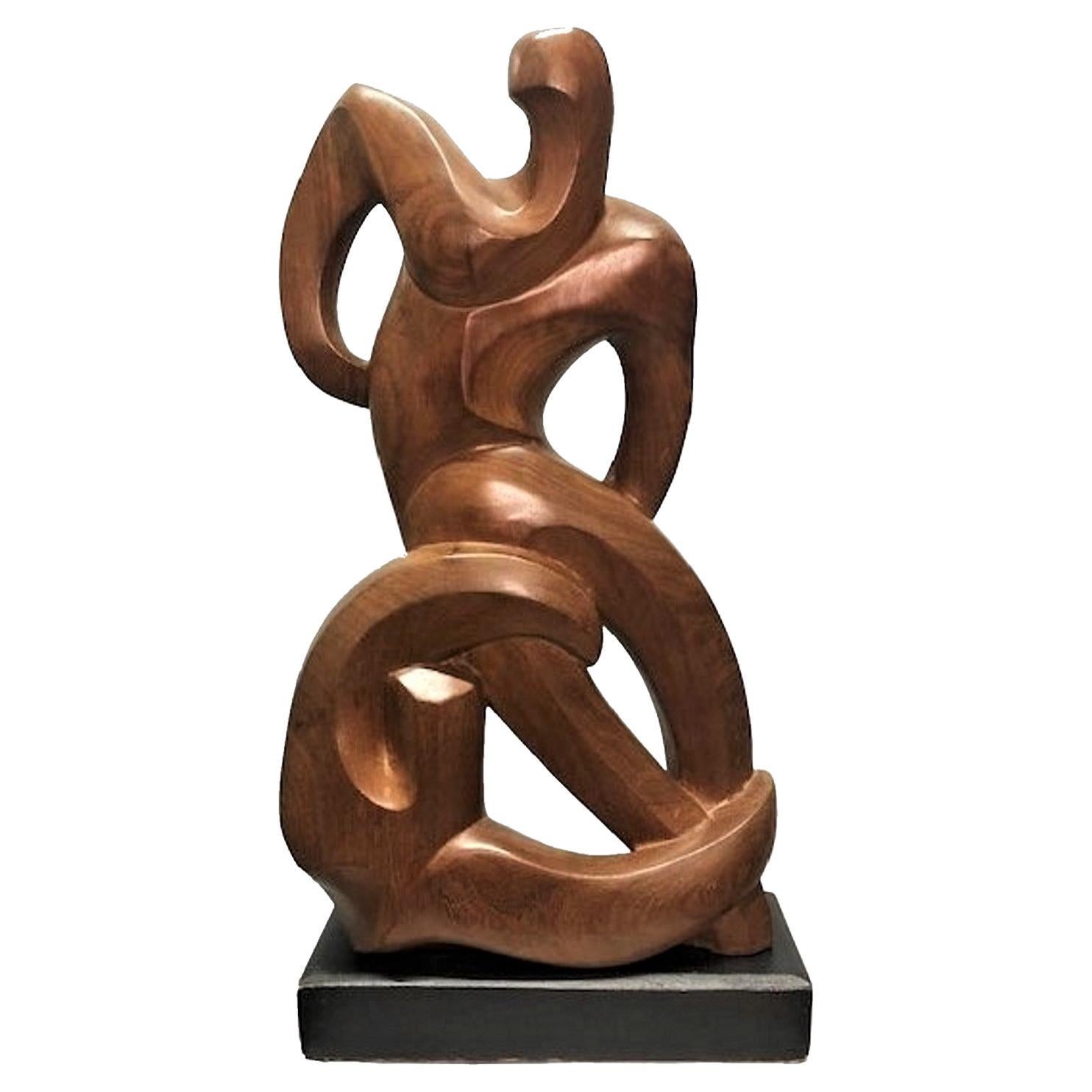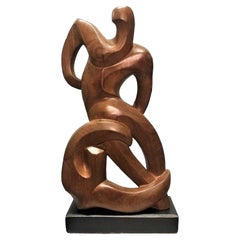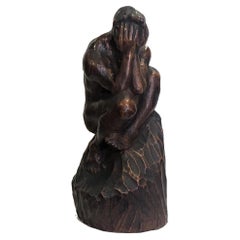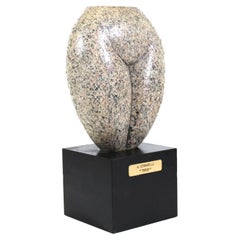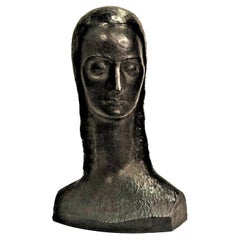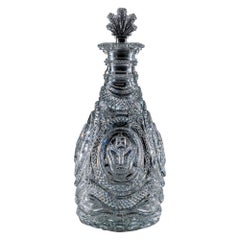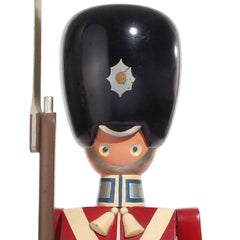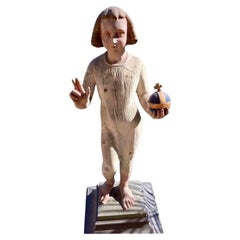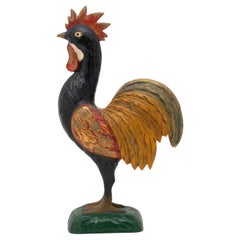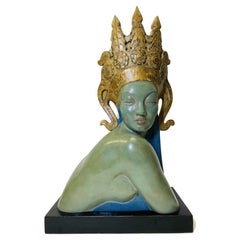
Allan Clark, the King's Temptress, Carved and Polychromed Mahogany, ca. 1926/27
View Similar Items
Want more images or videos?
Request additional images or videos from the seller
1 of 8
Allan Clark, the King's Temptress, Carved and Polychromed Mahogany, ca. 1926/27
About the Item
- Creator:Allan Clark (Sculptor)
- Dimensions:Height: 21.75 in (55.25 cm)Width: 13.5 in (34.29 cm)Depth: 8 in (20.32 cm)
- Style:Art Deco (Of the Period)
- Materials and Techniques:
- Place of Origin:
- Period:
- Date of Manufacture:circa 1926
- Condition:Wear consistent with age and use. We make our best effort to provide a fair and descriptive condition report. Please examine photos attentively, as they are an integral part of the description. Send us a message to request more details or discuss price.
- Seller Location:New York, NY
- Reference Number:1stDibs: LU2819329322792
About the Seller
5.0
Gold Seller
Premium sellers maintaining a 4.3+ rating and 24-hour response times
Established in 1993
1stDibs seller since 2017
80 sales on 1stDibs
Typical response time: 5 hours
Authenticity Guarantee
In the unlikely event there’s an issue with an item’s authenticity, contact us within 1 year for a full refund. DetailsMoney-Back Guarantee
If your item is not as described, is damaged in transit, or does not arrive, contact us within 7 days for a full refund. Details24-Hour Cancellation
You have a 24-hour grace period in which to reconsider your purchase, with no questions asked.Vetted Professional Sellers
Our world-class sellers must adhere to strict standards for service and quality, maintaining the integrity of our listings.Price-Match Guarantee
If you find that a seller listed the same item for a lower price elsewhere, we’ll match it.Trusted Global Delivery
Our best-in-class carrier network provides specialized shipping options worldwide, including custom delivery.More From This Seller
View AllEnid Bell Palanchian, Tackle, Modernist Carved Mahogany Sculpture, ca. 1953
By Enid Bell Palanchian
Located in New York, NY
DIMENSIONS height: 23 inches width; 12 inches depth: 6 inches
MARKINGS Signed at the bottom in back.
DETAILS Original hand-crafted black-painted wood plinth.
REFERENCES Originally, sold to Papillon Gallery of Los Angeles.
CONDITION Excellent antique condition, wear consistent with age and use.
Enid Bell Palanchian (American, 1904 – 1994) a/k/a Mrs. E. B. Palanchian, Mrs. Enid Bell Palanchian and Mrs. Missak Palanchian was an important American sculptor, author, illustrator and professor who was primarily active in the New York/New Jersey area, but who established a respected body of work recognized throughout Europe and the United States as reflected by awards received in Paris, New Jersey, New York, New Mexico and Florida. Her achievements included numerous public works projects (e.g., the design of the Congressional Gold Medal) on display at public institutions and museums around the country, private commissions and sales throughout the world, group and solo exhibitions, generous donations of art and compilations, and the passing on of her knowledge and skills to 24 years of art students of the Newark School of Industrial and Fine Arts.
Enid Bell was born in London, England, and later studied at the Glasgow School of Art and then at the St. John’s Wood Art School; as well as studying with fellow Scot Sir William Reid Dick in London. Then, after moving to the United States, she taught at the Art Student League in New York City at Miss Chapen’s School. Essentially a figurative, direct carving in wood artist, she was based in New Jersey where she became the head of the sculpture program of the Fedral Art Project for that state and was herself the creator of several FAP commissions. In 1932, she married Armenian/American businessman and artist, Missalk Palanchian athough she retained her name “Bell” for professional purposes. Following the end of the Federal Art Project in 1944, she taught as instructor of sculpture and Head of the Sculpture Department of the Newark School of Fine and Industrial Art until 1968, and was active was a member of the National Sculpture Society. Enid Bell died in 1994 in Englewood, New Jersey.
WORK
• Birds, Leonia Public Library in Leonia New Jersey (installed 1981)
• Untitled, Boonton Post Office in Boonton, New Jersey (1938)
• Boonton Post Office, Boonton, New Jersey
• Colonizing America, Center for Youth Education, Newark, New Jersey, (1934)
• Little Indian Dancer, Englewood Public Library, Englewood, New Jersey
• Alexander Hamilton Troy Public Library in Troy, New York
• bird bath, Music, Science, Union City...
Category
Vintage 1950s American Mid-Century Modern Abstract Sculptures
Materials
Mahogany
After The Thinker, Modern Carved Wood Sculpture, ca. 1960s
Located in New York, NY
Permanently exhibited at the Musee Rodin in Paris, ‘The Thinker’ (French: Le Penseur), the original Auguste Rodin’s bronze sculpture of...
Category
Vintage 1960s American Mid-Century Modern Figurative Sculptures
Materials
Wood
Amedeo Gennarelli, Torso, Art Deco Carved Granite Sculpture, ca. 1940
Located in New York, NY
Amedeo Gennarelli
Torso
Carved Granite
Art Deco
Circa 1940
DIMENSIONS
Height: 15.5 inches (39.37 cm)
Width: 8 inches (20.32 cm)
Depth: 6 inches (15.24 cm)
ABOUT
This expressive hand-carved and highly polished grey-and-pink granite sculpture is mounted on a square black stone base with the incised signature atop, ‘A. Gennarelli’.
AMEDEO GENNARELLI (Italian/French, 1881–1943) a/k/a Jean Ortis was a French/Italian sculptor. He was born in 1881 in Naples, Italy, but immigrated to Paris in 1913 and worked there; exhibiting at numerous Salons of the Societe des Artistes Francais through the years to come. He is known for his work in the art deco style and for his depictions of the female nudes; working in bronze, stone, terra-cotta and wood. Amedeo Gennarelli died in Paris...
Category
Vintage 1940s French Art Deco Figurative Sculptures
Materials
Granite, Stone
Modernist Carved Ebonized Wood Female Bust, ca. 1950
Located in New York, NY
This remarkable modernist carved ebonized wood female bust, ca. 1950s with a proudly set head on an exaggeratedly elongated neck and hair flowing over the shoulders, immediately conj...
Category
Vintage 1950s American Mid-Century Modern Busts
Materials
Wood
American Art Deco Carved Slate Nude Kneeling Woman Sculpture, ca. 1920
Located in New York, NY
American Art Deco
Nude Kneeling Woman
Carved Slate Sculpture
ca. 1920
DETAILS
Mounted on original marble base.
Apparently unsigned.
DIMENSIONS
Hei...
Category
Vintage 1920s American Art Deco Figurative Sculptures
Materials
Slate
Head, French Modernist Hand-Carved Wood Sculpture, ca. 1950
Located in New York, NY
Unusual in its conciseness and modernistic vision of a rather familiar subject - the human head - this original elegant sculpture does not leave anyone indifferent and is imprinted i...
Category
Vintage 1950s French Mid-Century Modern Abstract Sculptures
Materials
Wood
You May Also Like
The King's Decanter
Located in Steyning, West sussex
This exceptional blown and cut glass decanter is the pinnacle of regency cutting. The base decorated with sixteen ostrich feathers, arranged around a diamond ring. The body embellish...
Category
Antique 19th Century English Bottles
Materials
Cut Glass
$39,042
Giant-Sized King's Guardsman by Kay Bojesen
By Kay Bojesen
Located in Sagaponack, NY
A very rare and monumental giant-sized model of the Royal Danish King's Guardsman hand crafted in wood having movable arms and legs and retaining its ...
Category
Vintage 1950s Danish Scandinavian Modern Toys and Dolls
Materials
Wood
Carved And Polychrome Figure Of The Young Christ
Located in London, GB
A delightful carved and polychrome figure of the young Christ. From the De Wispelaere workshops in Bruges and dating to the later 1800s. Being well carved and of good proportions. At...
Category
Antique Late 19th Century Belgian Baroque Revival Figurative Sculptures
Materials
Wood, Paint
Polychrome Carved Rooster
Located in Coeur d'Alene, ID
Mid 20th Century American polychrome carved figure of a rooster. Beautiful colors of black, orange, red, brown, cream and green.
PERIOD: Mi...
Category
20th Century American Animal Sculptures
Materials
Wood
$900 / item
Six Very Fine Early 19th C Moulds Picturing Dutch Queen and King's Figures
Located in Leuven , BE
These very detailed moulds were used to make bronze reliefs.
Category
20th Century Unknown Busts
Materials
Stone
Polychrome carved wood Virgin and Child from the 15th Century
Located in Saint-Ouen, FR
POLYCHROME CARVED WOOD VIRGIN AND CHILD FROM THE 15TH CENTURY
ORIGIN: SOUTH GERMANY, SWABIA, NUREMBERG REGION
PERIOD: 15th CENTURY
Height: 94,6cm
Width : 28 cm
Depth : 18 cm
Lime wood
Original Polychromy
Good state of conservation
From 1430 onwards, sculpture underwent a profound stylistic renewal which continued until 1530, the so-called late Gothic period. In the Germanic countries, original sculptures flourished in an expressive and sensitive vein.
This renewal was inspired by the art of Nicholas of Leiden, who was active in Strasbourg in the 1460's. His style broke with the refined and delicate art of the international Gothic style in force throughout Europe around 1400. The figures became more authentic and realistic. The bodies became denser. Clothes are animated by deep, broken folds, the fabrics are heavy and have a great decorative value. In addition, the polychromy is intended to be illusionistic. The painting makes it possible to restore the texture of the materials, the richness of the textiles and the natural skin tone of the characters.
The dissemination of images through engraving and the great mobility of the artists led to the success of this style, which conquered the Upper Rhine, Swabian, Tyrolean and Franconian regions, contributing to the formation of a common stylistic identity in these regions. The economic boom in the flourishing German cities was conducive to the development of original production. Attracted by this prosperity, numerous workshops were set up in order to meet the orders of religious communities, the Church and the laity, including a clientele of middle-class rockers.
This precious Virgin and Child is depicted standing on a crescent moon, her head encircled by a crown of tall flowers. Her long wavy hair spreads over her shoulders, framing her beautiful oval face. Under fine eyebrows drawn with a brushstroke, her almond-shaped, slightly drooping eyes look at the Child with infinite softness. She is dressed in a long red dress with a rounded neckline, belted under the chest. The heavy fabric of her dress spreads out in broken folds at her feet. On her shoulders she wears a golden cloak. The drapery has deep folds. She holds out her right hand while she holds the Christ Child with her left.
Christ, with his well-defined hair, is naked. His cheeks are highlighted with red, he holds an apple in his left hand and with the other hand makes a sign of blessing towards the faithful.
Virgins with Child on a crescent moon were very popular in the second half of the 15th century, especially as the central subject of altarpieces in southern Germany and Austria. The crescent moon on which Mary is standing is reminiscent of the Woman of the Apocalypse. Often equated with the Virgin Mary.
This episode is taken from the Book of Revelation (12:1-6)
1 Then a great sign appeared in heaven: a woman clothed with the sun, with the moon under her feet and a crown of twelve stars on her head. ; 2 She was pregnant, and she cried out because she was in labor, in pain from giving birth. ; 3 Then another sign appeared in heaven: it was a great fiery red dragon, with seven heads and ten horns, and seven royal crowns on his heads. ; 4 His tail swept down a third of heaven's stars and threw them to the earth. The dragon stood in front of the woman who was about to give birth so that when she gave birth, he might devour her child. ; 5 She gave birth to a son, a male child who is to rule all the nations with an iron rod. Her child was snatched up to God and his throne. ; 6 Then the woman fled into the desert, where God has prepared a place for her. There she will be taken care of for one thousand two hundred sixty days.
Some theologians see in this woman a reference to the Virgin Mary and in the child, Jesus.
This remarkable work is a very fine example of sculpture from Swabian workshops in the last decades of the 15th century. It presents all the characteristic stylistic elements: a highly girdled silhouette, an abundant drapery with angular folds, but also a great physical presence accentuated by the polychromy that restores the anatomical details. This group is made of a wooden log. The deep folds of the drapery highlight the movement of the Virgin holding the child.
Bibliography :
Sophie Guillot de Suduiraut, Dévotion et Séduction, Sculptures souabes des musées de France, vers 1460-1530, Paris musée du Louvre-Éditions somogy, 2015
“Revelation 12 - Common English Bible...
Category
Antique 15th Century and Earlier German Gothic Figurative Sculptures
Materials
Wood
Recently Viewed
View AllMore Ways To Browse
Hunter Figurine
Inuit Soapstone Carving
Japanese Bronze Figurines
Joan Of Arc Marble
Kneeling Horse
La Jeunesse
Lady With Tambourine
Lapini Marble Statue
Lifesize Nudes
Limousin Art Deco
Lladro Figurine Blue
Male Vintage Mannequin
Mannequin Lay
Marcos Pottery
Mary Magdalene Sculpture
Massa Carrara
Mayan Mask
Memphis Antique Furniture
